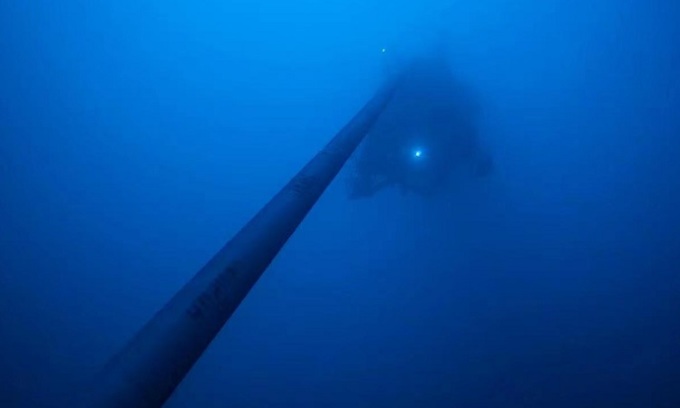On June 22, China completed the installation of a 115.5 km long deepwater pipeline used to transport oil and gas.

The pipeline is located 1,000 meters below sea level. Photo: CNOOC
The newly installed pipeline is a key part of the second phase of the Shenhai-1 project, China's first independently developed ultra-deepwater power station, which will be operational in June 2021, according to CGTN .
Phase II of the project began construction in November last year, 130 kilometers off Sanya City on China's southern Hainan Island, between the Yacheng 13-1 gas field and the Shenhai-1 power station. The maximum operating depth in the area is nearly 1,000 meters. Once operational, the Phase II project is expected to increase the maximum annual output of Shenhai-1 from 3 billion cubic meters to 4.5 billion cubic meters.
In order to develop the Phase II project efficiently and economically, China National Offshore Oil Corporation (CNOOC) pioneered the application of a new model, which includes a subsea production system, a shallow-water jacket processing platform and a remote control system for a deep-water semi-submersible rig, according to Wu Hualin, deputy director of cables and pipelines at the Shenhai-1 Phase II project at CNOOC's Hainan branch.
The underwater pipeline serves as a "lifeline" to ensure the smooth transportation of offshore oil and gas. The Phase II project focuses on China's first deepwater high-pressure gas field. The oil and gas produced from the field has complex compositions and is subjected to high temperatures and pressures. Conventional pipelines cannot meet production requirements.
Therefore, CNOOC uses a combination of 114 km of large-diameter seamless steel pipelines and 1.5 km of bimetallic composite pipelines in deepwater environments to transport oil and gas.
An Khang (According to CGTN )
Source link


































































































Comment (0)